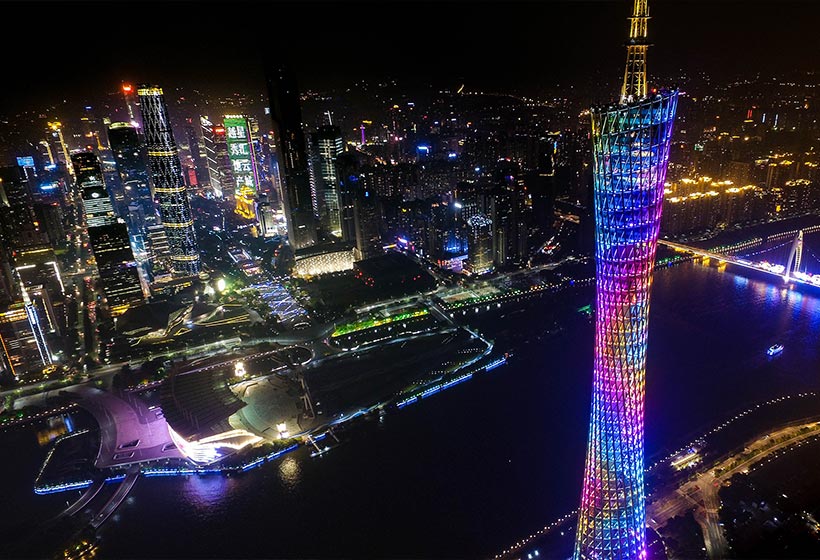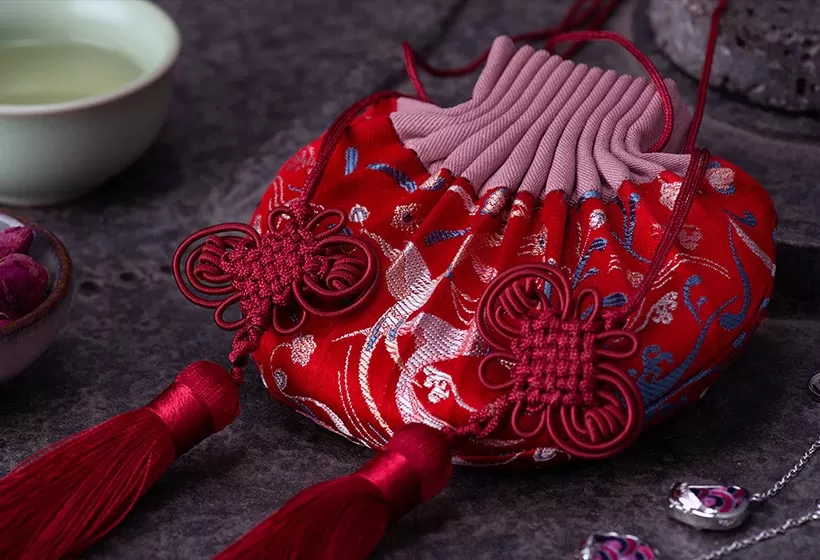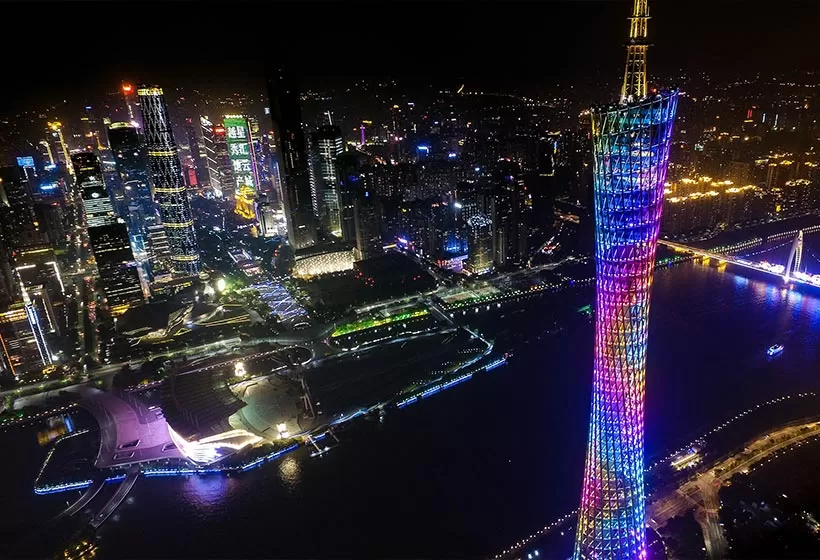Short Introduction to Guangdong Local Culture: History, Nation, Diet, Clothing, etc
Guangdong Province is located in southern China and has a strategic geographical position. It is a populous province with a large and diverse population. As of 2023, the province has a permanent resident population of 127.06 million. The official language is primarily Mandarin, but Cantonese and Hakka are also widely spoken.
Guangdong is home to a variety of ethnic groups, each contributing to its rich and vibrant cultural tapestry. The province is renowned for its unique cultural traditions, such as Lingnan culture, and its diverse culinary heritage. It also boasts a robust economy and plays a pivotal role in China’s overall development.
Brief History
Guangdong has a long and rich history. It has been an important region in China for centuries.
In ancient times, Guangdong was part of the Baiyue region. Over time, it developed significant trade and cultural exchanges due to its strategic location along the coast.
During the Tang Dynasty, Guangzhou was the capital of the Zhongdu Military Governorate, commonly referred to as "Guangfu."
In the Song and Yuan dynasties, the population migration from northern China to the south accelerated the development of Guangdong, especially the Pearl River Delta and Han River Delta. Guangzhou established the Shibo Office to strengthen maritime trade management. During the Tang and Song dynasties, Guangdong became an important trading port, facilitating exchanges with foreign countries.
In 1369, during the Ming Dynasty's Hongwu period, Guangdong Circuit was renamed Guangdong and other regions under the central administration, making it one of the "Thirteen Hangs" provinces of the Ming Dynasty.
In the early Qing Dynasty, the name "Guangdong Province" was officially adopted, and a governor was appointed to oversee both Guangdong and Guangxi provinces, called the "Governor of Liangguang." Initially stationed in Zhaoqing, the capital was moved to Guangzhou in 1746 during the Qianlong reign.
In 1925, the Nationalist Government of the Republic of China was established in Guangzhou, and in July of that year, the Guangzhou Municipal Hall was renamed the Guangzhou City Government.
In October 1938, during the Second Sino-Japanese War, the Japanese army occupied Guangzhou, and the provincial government of Guangdong retreated to northern Guangdong (now Lianzhou).
After the founding of the People's Republic of China in 1949, Guangdong province was divided into eight administrative regions: Pearl River, East River, West River, Central Guangdong, South Route, Xingmei, Chaoshan, and Qiongya, along with two prefecture-level cities, five county-level cities, and 98 counties. Guangzhou was made a centrally administered city.
In the modern era, Guangdong played a crucial role in China's economic reforms and opening up. Special Economic Zones were established in cities like Shenzhen, leading to rapid economic growth and industrial development.
Today, Guangdong is one of the most prosperous provinces in China, known for its advanced manufacturing, technology, and trade. It continues to be at the forefront of China's economic and social development.
Region Culture
Guangdong Province is home to all 56 ethnic groups in China. The official language is primarily Mandarin, but Cantonese and Hakka are also widely spoken. As of 2023, the province has a permanent resident population of 127.06 million. The Han Chinese make up 98.16% of the total population, while ethnic minorities account for around 2 million people. The indigenous ethnic groups include the Zhuang, Yao, She, Hui, and Manchu. The province's cultural characteristics are mainly shaped by the local Cantonese people, Hakka, and Chaozhou (Teochew) people. As a result, Guangdong can be broadly divided into three main cultural regions: Cantonese culture, Hakka culture, and Chaozhou culture. Guangzhou and Foshan are regarded as the birthplace of "Cantonese culture."
Local Dialect /Language
Guangdong is primarily known for three major Chinese dialects: Cantonese, Hakka, and Minnan. Cantonese, also known as Yueyu or Baihua, is the dominant dialect in the central and southwestern regions of Guangdong, with Guangzhou dialect as the representative. Hakka is mainly spoken in the northern and eastern parts of the province, including cities like Meizhou, Heyuan, Shaoguan, and Huizhou. Guangdong Minnan dialect, belonging to the Min branch, is commonly spoken in the Chaozhou region and is also known as Chaozhouhua or Teochew.
Lingnan Architecture
The architecture of Guangdong vividly showcases the fusion and clash of diverse cultures, just like a three-dimensional history book. Traditional Lingnan architecture forms the foundation, which is mainly divided into Guangfu architecture, Hakka architecture in eastern Guangdong, and Chaozhou architecture, along with Lingnan gardens, Xiguan mansions, and the Diaolou of Kaiping. Guangfu residential buildings, such as the Chen Clan Ancestral Hall.
Huog'er House, have distinct architectural styles representing the Guangfu, Hakka, and Chaozhou traditions, with Guangfu architecture being particularly exquisite. Notable examples include the ancient village of Shangyue in Longshan Town, Fogang County, and Qingyuan City, and Shawan Town in Panyu District, Guangzhou.
The Qilou, a type of Cantonese architecture, is one of the most representative styles, and areas like Beijing Road and Shangxiajiu in Guangzhou are filled with a strong historical and cultural atmosphere.
Clothes style
The clothing cultures of the Cantonese, Hakka, and Fukienese (Fujianese) people each have distinct characteristics.
Cantonese clothing is made from various materials such as cotton, linen, banana fiber, bamboo, ramie, and silk. Due to the hot and humid climate, the fabrics are generally light and breathable to ensure comfortHakka clothing tends to be simpler and more modest, with fewer decorative patterns. Women's garments, such as the long gown, often feature minimal embellishments like a few rings of decoration at the cuffs or subtle piping along the collar. The predominant color tones are blue, gray, and black.
Fujianese clothing often uses locally sourced cotton and linen. Their garments typically feature broad collars and are bordered with trim, giving them a spacious and loose design, emphasizing comfort and practicality.
Folk Festivals
The folk activities in the Cantonese (Guangfu) region are diverse and vibrant, such as visiting flower markets and performing lion dances during the Spring Festival, dragon boat races during the Dragon Boat Festival, and moon-gazing during the Mid-Autumn Festival. These traditional celebrations not only enhance the festive atmosphere but also preserve and pass down the region’s rich cultural heritage.
Chinese New Year-Lion dance (Xingshi): also known as "Guangdong Xingshi," is one of the most iconic traditional performances in Chinese culture, a folk art with a long history and profound cultural significance. Particularly prominent in Guangdong and other regions influenced by Cantonese culture. It is often performed during festivals, celebrations, and auspicious events such as Chinese New Year, weddings, and business openings to bring good luck, drive away evil spirits, express people's hopes for a prosperous, peaceful life, and promote prosperity.
It requires high skills and teamwork from the dancers. They need to coordinate well to perform various difficult movements such as leaping, turning, and climbing. The drummer plays an important role by setting the rhythm and pace for the performance.
In recent years, the Guangdong Lion dance has gained more attention and popularity both domestically and internationally, becoming an important cultural symbol representing the unique charm of Guangdong.
The Dragon Boat Festival(The fifth day of the fifth lunar month):also known as "Chebei Village Dragon Boat Racing," is a traditional folk event in Tianhe District, Guangzhou, Guangdong Province. It is recognized as a provincial-level intangible cultural heritage of Guangdong. This celebration preserves the traditional dragon boat customs of the Lingnan region, which includes activities such as launching the dragon boat, picking herbs, dragon boat races, dragon boat displays, dragon hiding, and dragon releasing. Additionally, there are various folk activities like dragon boat rice, dragon boat cakes, and dragon boat plays, making the event lively and festive.
Qiuse Parade in Foshan ( 1st to 3rd in November): It is typically held in Zumiao Street of Chancheng District. It is an annual cultural event that celebrates the rich history, traditions, and customs of Foshan. The parade often includes elements like the lion dance, dragon dance, Chaoshan Yingge Dance, traditional martial arts performances, and Cantonese opera. It serves as a lively showcase of Foshan's unique cultural identity and offers a chance for both locals and tourists to experience the city's vibrant arts scene and festive atmosphere.
The Spring Festival Flower Market(January-February): is a unique cultural event in Guangzhou. Known as the "Flower City," Guangzhou’s annual flower market attracts worldwide attention. On the eve of the Chinese New Year, the streets and alleys of Guangzhou are filled with fresh flowers and potted plants, and many parks host Spring Flower Exhibitions. Large flower markets are often adorned with archways and floral displays, with florists flocking in to sell flowers and kumquat trees. The markets are vibrant and bustling, with crowds of people, and the festivities continue until the early hours of the first day of the New Year. This is the distinctive Spring Festival Flower Market of Guangdong.
Lantern Festival (The fifteenth day of the first lunar month): During the Chinese Lantern Festival, Litchi Bay Scenic Area will arrange exquisite lanterns for people to enjoy, and also hold lantern riddle guessing, river lanterns, rice dumplings, Xiguan wedding performances and other exciting Lantern Festival programs.
Diet Style and Culinary Tastes
Guangdong is the only place in China where food has become a culture in itself. Cantonese cuisine, or "Chao Cantonese cuisine" in a broader sense, is a collective term for the local dishes of Guangdong. Known as the culinary world of China, Guangdong's cuisine is a food paradise, characterized by its wide range of ingredients, the most diverse among all Chinese cuisines.
In terms of taste, it is fresh, crisp, and highlights the original flavors. The cooking methods include frying, stir-frying, braising, stewing, and steaming, with a particular expertise in techniques like braising, soft-frying, and quick frying. Some representative dishes include: Eight Treasure Winter Melon Soup, White Cut Chicken, Crispy Roasted Goose, Mei Cai Kou Rou (braised pork with preserved mustard greens), Roasted Suckling Pig, and more. Additionally, there is a wide variety of dim sum, desserts, and seafood.
The vibrant food markets and traditional restaurants provide a rich culinary experience reflecting that reflects the region’s Cantonese and Hakka cultural heritage.
Cultural Heritage
Guangdong Province is also the birthplace of the Maritime Silk Road and a key origin of China's modern revolutionary movements. The three major ethnic groups—Cantonese, Hakka, and Chaozhou—each have their own unique customs and traditions. Currently, Guangdong is home to one World Cultural Heritage site, 131 national key cultural heritage sites, four items on the Representative List of Intangible Cultural Heritage of Humanity, 147 national-level intangible cultural heritage items, and 132 national-level intangible cultural heritage inheritors. Including Cantonese opera, Cantonese culture, lion dance, kung fu, arcade buildings, Kaiping Diaolou, Canton embroidery, and traditional Chinese medicine,etc.
Commercial Culture
Guangdong's commercial culture dates back to ancient times and has evolved into two major economic hubs: Shenzhen and Guangzhou. As a millennium-old trading center, Guangzhou is the only city in China to have sustained uninterrupted foreign trade for over two thousand years. Known for its rich history of commerce, the people of Guangdong are celebrated for their entrepreneurial spirit and sharp business acumen.
A story that exemplifies Guangdong’s business culture is that of a small local factory. Facing intense competition from larger rivals, the factory’s owner decided to focus on developing a niche product. Through continuous research and development, they created a unique and high-quality item that filled a gap in the market. They then leveraged their network of contacts to promote and distribute the product, eventually achieving significant success and expanding their business.
In conclusion, Guangdong’s business culture, with its focus on innovation, collaboration, and adaptability, has contributed significantly to the region’s economic prosperity and continues to inspire new generations of entrepreneurs.
Special Local Product
Guangdong is renowned for its unique local products, including Xinhui tangerine peel, Duan inkstone, herbal tea, Yunnan seedless yellow tangerine peel, Zengcheng lychee, Baitang Mountain tea, and other distinctive regional specialties. These products reflect the rich cultural and natural heritage of the province, each offering a taste of Guangdong's diverse flavors and craftsmanship.
Customize Your Unique Guangdong Tour
If you are interested in one of the Guangdong itineraries mentioned above, please contact us, and we will be happy to customize it and provide a quote tailored to your preferences.
Alternatively, if you would like to customize your Guangdong Tour, please visit our Guangdong Tour Customized Center. We assure you that you will receive a reply within 24 working hours.
Informative Articles for Your Guangdong Trip
 Canton Tower
Canton Tower- Travel Guide: attractions, seasons, hotels, food, itineraries, etc.
- Top destinations: places to visit in Guangdong
- Travel itineraries: best itineraries for your reference
- Weather: the best time and seasons to visit Guangdong
- Top attractions:well-selected top attractions in Guangdong
- Cultural immersions: hands-on activities to spotlight your trip
- Unique perspective: top different things to do
- Guangdong Culture: rich and unique
- Local food: what to eat while traveling in Guangdong
- Luxury hotels: where to stay in Guangdong
- Guangdong Tours: tailor-made Guangdong Tours for your reference
GREAT FAMILY CHINA TOUR
JULY 2024 We wanted to thank Grace at China Culture tour for organizing a great tour of China. We enjoyed our Beijing - Xian-Chengdu -Guilin -Yangshuo - Shanghai trip. Our local guides Bruce in Beijing, Susan in Xian, Jane in Chengdu, Mike in Guilin and Mary in Shanghai took care of us…read more details »
Teng Han L from SINGAPORE
Ready to Create a Unique Dream Travel?


